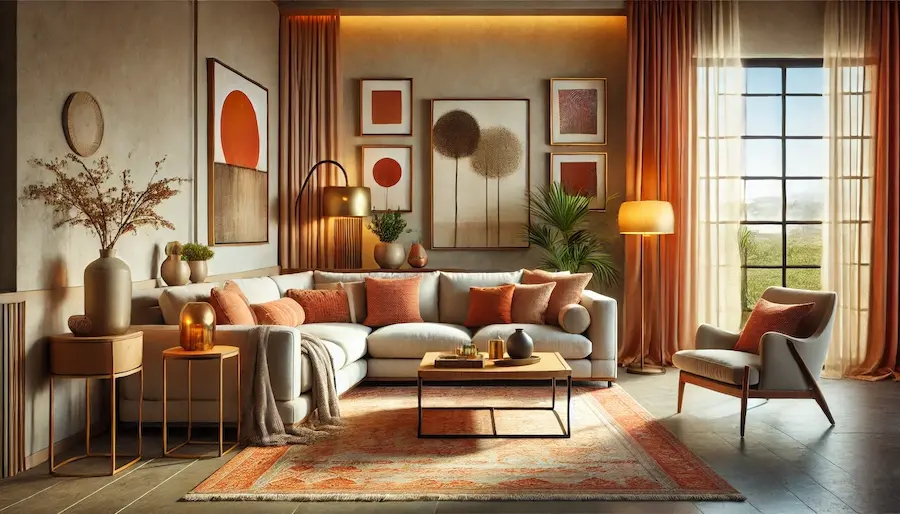A warm palette living room utilizes colors like reds, oranges, yellows, and earthy tones to create an inviting and cozy atmosphere.
History and Origins of Warm Palette Design
Warm color schemes have been integral to interior design for centuries, often used to evoke comfort and hospitality. Historically, warm hues have been associated with energy and warmth, making them popular choices for communal spaces like living rooms. In various cultures, these colors symbolize different emotions and have been employed to create specific moods within a home.
Key Features of a Warm Palette Living Room
- Color Selection: Incorporate shades of red, orange, yellow, and earthy tones like terracotta and brown to establish a warm ambiance. These colors can be applied to walls, furniture, and accessories to envelop the room in warmth.
- Texture and Materials: Utilize natural materials such as wood, leather, and woven fabrics to enhance the warm aesthetic. Elements like wooden coffee tables, leather sofas, and knitted throw blankets contribute to a cozy environment.
- Lighting: Opt for warm-toned lighting to complement the color scheme. Soft, ambient lighting from table lamps or floor lamps with warm-colored shades can enhance the inviting atmosphere.
- Accent Pieces: Incorporate decor items such as cushions, rugs, and artwork in warm hues to tie the room together. For example, a burnt-orange throw pillow or a red-patterned area rug can add pops of color that reinforce the warm palette.
Applications of Warm Palette Design in Living Rooms
- Bold Walls: Painting walls in deep, warm colors like burnt sienna or mustard yellow can make a striking statement and set the tone for the room. This approach works well in larger spaces where bold colors won’t overwhelm.
- Neutral Base with Warm Accents: Starting with neutral walls and adding warm-colored furnishings and accessories can create a balanced and inviting space. This method allows for flexibility and easy updates to the decor.
- Layered Textures: Combining different textures in warm tones—such as a plush rust-colored sofa with a wooden coffee table—adds depth and interest to the room. Layering textures can make the space feel more dynamic and cozy.
Considerations When Designing a Warm Palette Living Room
- Balance: While warm colors are inviting, too much can be overwhelming. Balance warm hues with neutral tones to prevent the space from feeling too intense. For instance, pairing a warm-colored sofa with neutral walls can create harmony.
- Natural Light: Consider the room’s natural lighting when choosing warm colors, as they can appear more intense in bright light. Testing paint samples at different times of day can help determine the best shade.
- Personal Preference: Ensure the chosen color scheme reflects your personal style and comfort, as warm palettes can range from vibrant and energetic to soft and soothing. Selecting shades that resonate with you will make the space feel more personalized and enjoyable.
Conclusion
Designing a warm palette living room involves thoughtful selection of colors, textures, and lighting to create a space that is both inviting and aesthetically pleasing. By balancing warm hues with neutral tones and incorporating natural materials, you can achieve a cozy and harmonious environment that reflects your personal style.
